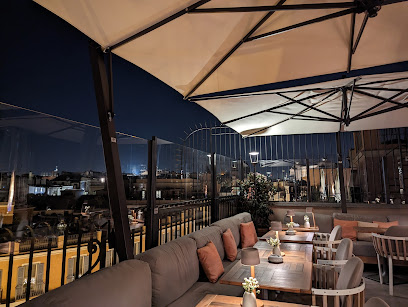
Exploring the Historic Temple of Apollo Palatinus
Discover the ancient splendor of the Temple of Apollo Palatinus, a historical gem on Palatine Hill in Rome, steeped in rich cultural heritage.
Venture into the heart of ancient Rome with a visit to the Temple of Apollo Palatinus. This remarkable historical landmark offers a glimpse into the grandeur of Roman architecture and religious practices. Nestled amidst the scenic Palatine Hill, it stands not only as a testament to the rich history of the city but also as a serene escape from the bustling streets of modern Rome. With its captivating ruins and stunning views of the surrounding landscape, the Temple of Apollo Palatinus is a must-see for any tourist looking to delve into the past.
A brief summary to Temple of Apollo Palatinus
- Rome, Metropolitan City of Rome Capital, IT
- Monday 8:30 am-7:15 pm
- Tuesday 8:30 am-7:15 pm
- Wednesday 8:30 am-7:15 pm
- Thursday 8:30 am-7:15 pm
- Friday 8:30 am-7:15 pm
- Saturday 8:30 am-7:15 pm
- Sunday 8:30 am-7:15 pm
Local tips
- Visit early in the morning or late afternoon for fewer crowds and better lighting for photos.
- Bring comfortable walking shoes as the terrain can be uneven.
- Consider hiring a local guide to enrich your understanding of the site's history.
- Don’t forget your camera; the views from the temple are stunning!
- Check the opening hours before your visit, as they may vary seasonally.
Getting There
-
Metro
Start your journey at the nearest metro station, Termini. Take Line B (blue line) in the direction of Laurentina. Get off at the next stop, Colosseo. From Colosseo, exit the station and head towards the Colosseum. Once you are outside, turn left and walk along Via di San Giovanni in Laterano until you reach Piazza del Colosseo. From there, continue straight until you reach the entrance of Parco del Colosseo.
-
Walking
Once you are in Parco del Colosseo, follow the signs leading you towards the Palatine Hill. As you walk, you will see the ruins of ancient buildings. Continue to the top of Palatine Hill where the Temple of Apollo Palatinus is located. The temple is situated near the entrance of the archaeological site.
-
Bus
Alternatively, from Termini Station, you can take bus 75 towards Risorgimento and get off at the stop called 'Colosseo'. From Colosseo, follow the same walking directions as mentioned above to reach the Temple of Apollo Palatinus.
Discover more about Temple of Apollo Palatinus
Iconic landmarks you can’t miss
Arch of Janus
0.3 km
Explore the Arch of Janus, an ancient Roman landmark with rich history and stunning architecture, perfect for culture and history enthusiasts.
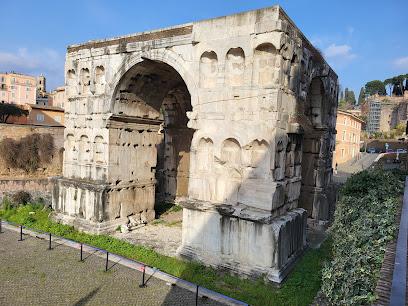
Parco archeologico del Colosseo
0.3 km
Explore the ancient heart of Rome at Parco archeologico del Colosseo, where history and architecture converge in a breathtaking archaeological museum.
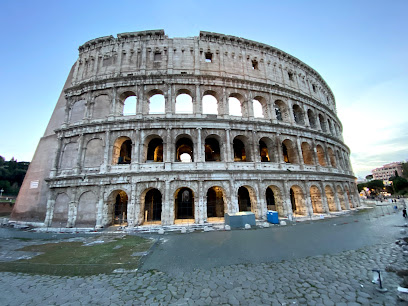
House of the Vestals
0.3 km
Explore the House of the Vestals, a captivating archaeological site in Rome that unveils the secrets of the ancient Vestal Virgins and Roman culture.
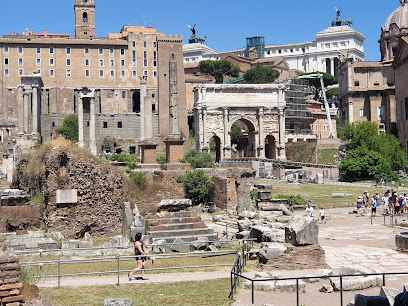
Colosseo view point
0.3 km
Experience the breathtaking views of the Colosseum from the Colosseo Viewpoint, a historical landmark in the heart of Rome, Italy.
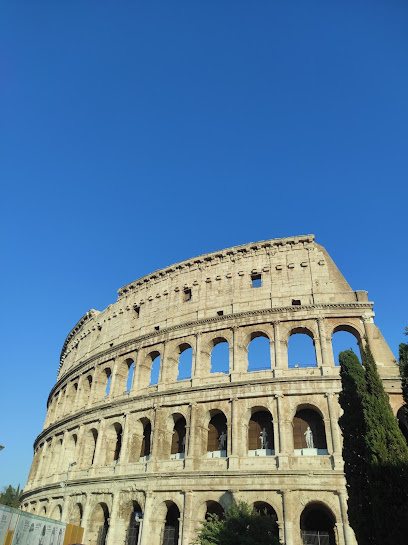
Circus Maximus
0.3 km
Explore the vast, historic Circus Maximus, the ancient chariot racing stadium in the heart of Rome, surrounded by stunning views and rich history.
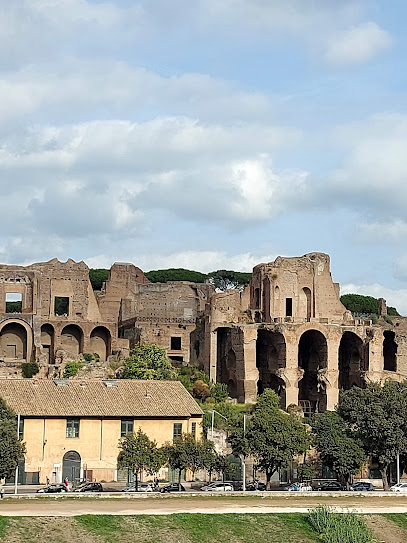
Arch of Titus
0.3 km
Explore the Arch of Titus in Rome - a breathtaking monument showcasing the triumphs of the Roman Empire, rich in history and architectural beauty.
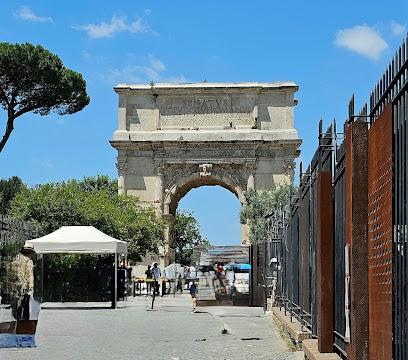
Via di S. Gregorio, 30
0.3 km
Explore the enchanting Via di S. Gregorio, where historic charm meets the vibrant essence of Rome, offering a unique experience for every traveler.
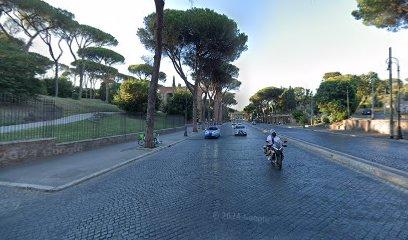
Circus Maximus Mithraeum
0.3 km
Uncover the secrets of early Christianity at the Circus Maximus Mithraeum, an ancient Roman landmark steeped in history and mystique.
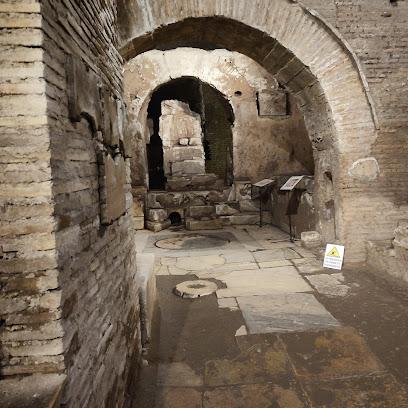
Via Sacra
0.3 km
Explore the historic Via Sacra in Rome, a captivating ancient road filled with ruins and monuments that narrate the grandeur of the Roman Empire.
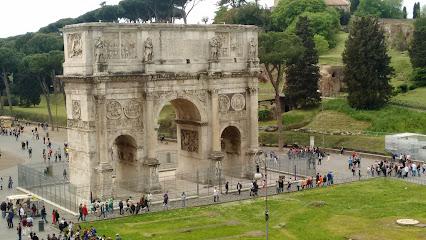
Roman Forum
0.4 km
Explore the Roman Forum: An Open-Air Museum of Ancient Rome’s Political and Cultural Heart.
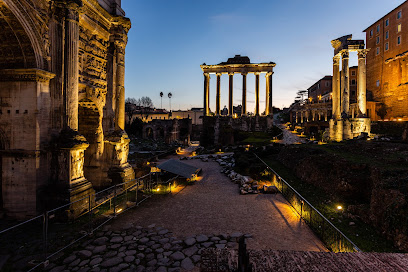
Piazza della Bocca della Verità
0.4 km
Explore the enchanting Piazza della Bocca della Verità, home to the legendary Mouth of Truth and a vibrant slice of Roman history and culture.
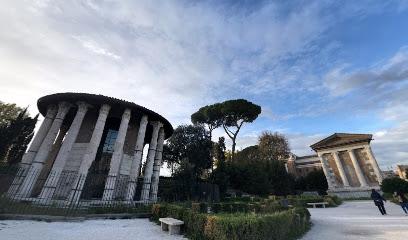
Piazzale Ugo La Malfa
0.4 km
Discover the enchanting views and serene atmosphere of Piazzale Ugo La Malfa, a must-visit square in the heart of Rome for every traveler.
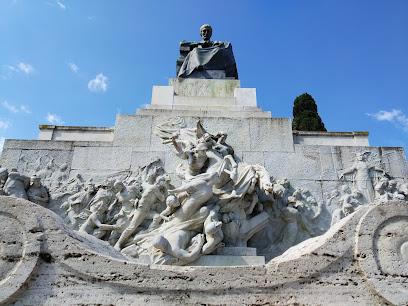
Temple of Hercules Victor
0.4 km
Discover the Temple of Hercules Victor, a remarkable ancient monument in Rome that showcases stunning architecture and rich historical significance.
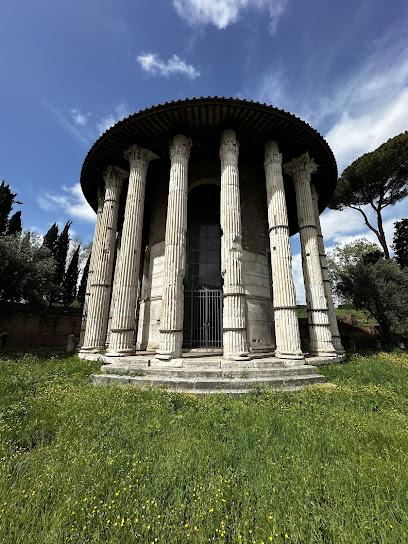
Arch of Constantine
0.4 km
Discover the Arch of Constantine, an ancient triumphal arch that celebrates Rome's rich history and stands as a majestic symbol of victory.
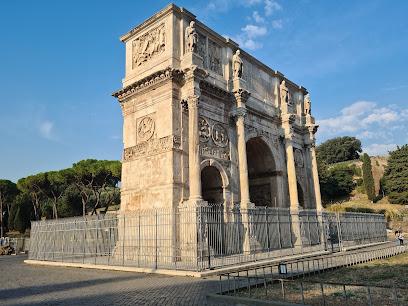
Via Luigi Petroselli
0.4 km
Experience the charm and history of Via Luigi Petroselli, a picturesque street in Rome with stunning views of the Tiber River.

Unmissable attractions to see
House of Livia on Palatine Hill
0.0 km
Step back in time at the House of Livia on Palatine Hill, a captivating historical landmark showcasing the grandeur of ancient Roman life.
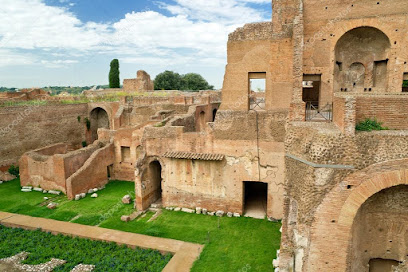
House of Augustus
0.1 km
Explore the House of Augustus, a stunning historical landmark in Rome that unveils the grandeur of ancient Rome's first emperor.
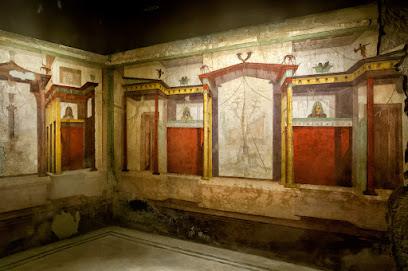
Domus Augustana
0.1 km
Discover the majestic ruins of Domus Augustana, an open-air museum revealing the grandeur of Rome's imperial history amidst stunning views.

Domus Transitoria Neroniana
0.1 km
Explore the Domus Transitoria Neroniana, an archaeological treasure in Rome, revealing the lavish life of Emperor Nero and the artistry of ancient Rome.
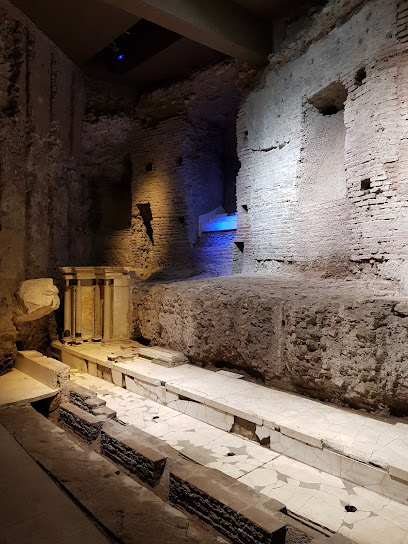
Flavian Palace
0.1 km
Discover the Flavian Palace, an iconic historical landmark in Rome, offering a glimpse into the opulence of ancient Roman emperors.
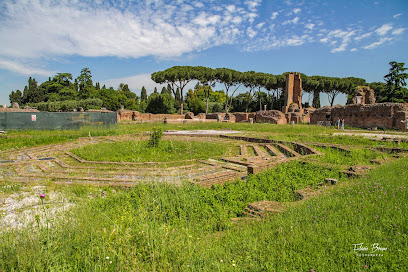
Museo Palatino
0.1 km
Explore the ancient heart of Rome at Museo Palatino, home to stunning artifacts and breathtaking views from the historic Palatine Hill.
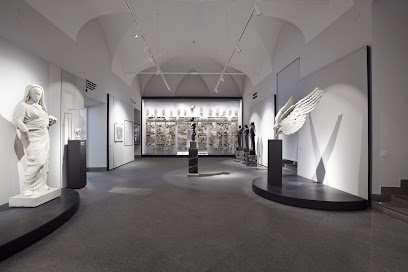
Temple of Magna Mater
0.1 km
Explore the Temple of Magna Mater, a historical landmark in Rome, and experience the ancient roots of Roman culture and spirituality.
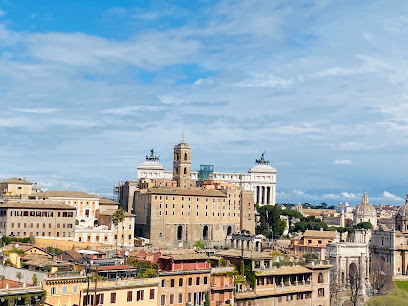
Domus Tiberiana - Roman Forums
0.1 km
Explore the Domus Tiberiana, an extraordinary historical landmark that offers a glimpse into the opulence and grandeur of Ancient Rome.
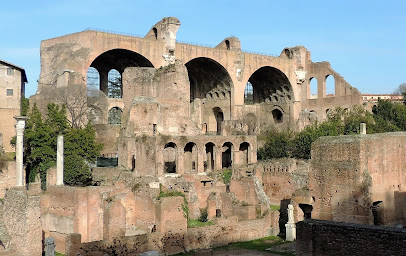
House of Grifi on Palatine Hill
0.1 km
Explore the House of Grifi on Palatine Hill, a historical site revealing the artistry and daily life of ancient Rome with stunning views.
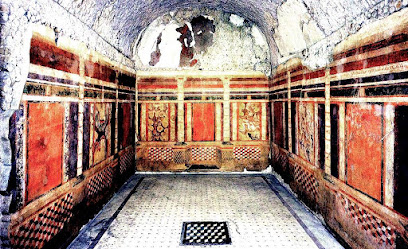
Ninfeo Degli Specchi
0.1 km
Explore the stunning Ninfeo Degli Specchi, a historical garden in Rome that combines serene nature with the echoes of ancient architecture.
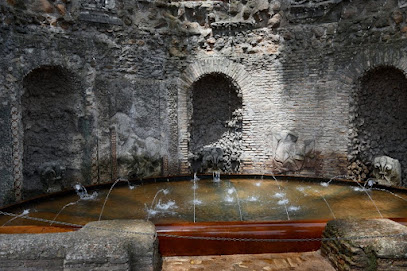
Fountain of the Pelte
0.1 km
Discover the historic beauty of the Fountain of the Pelte in Rome, a stunning masterpiece that enchants visitors with its artistry and charm.
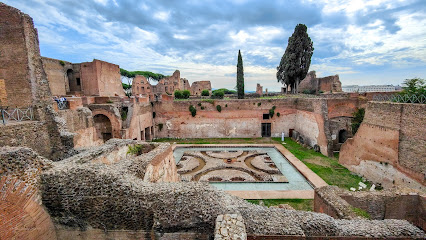
Palatine Hill
0.2 km
Explore the ancient splendor of Palatine Hill, where Rome's storied past meets breathtaking views and lush gardens.
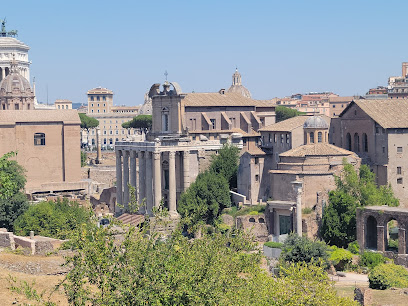
Basilica di Sant'Anastasia al Palatino
0.2 km
Explore the Basilica di Sant'Anastasia al Palatino, a serene and historic gem in Rome, showcasing stunning art and rich spiritual heritage.
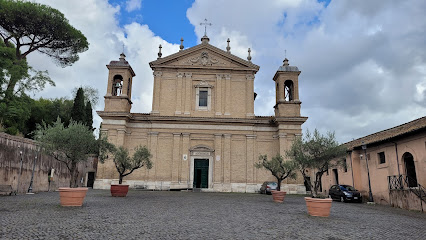
Campagna Amica Market
0.2 km
Explore the Campagna Amica Market in Rome for fresh produce, artisanal goods, and a vibrant taste of Italian culture.
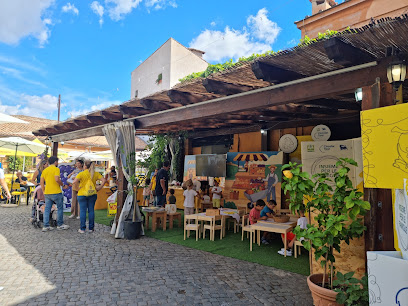
Stadio Palatino
0.2 km
Experience the historical allure of Stadio Palatino, where ancient Rome's legacy comes to life among breathtaking ruins and stunning vistas.
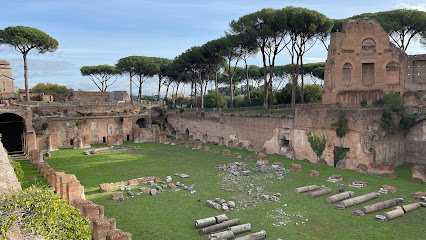
Essential places to dine
Ristorante Ad hoc
0.2 km
Experience authentic Italian cuisine at Ristorante Ad hoc in Rome – where every meal is a celebration of flavor and tradition.
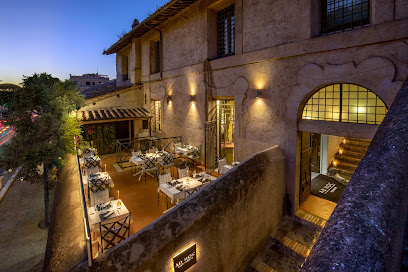
Unique Al Palatino Garden Restaurant
0.2 km
Experience authentic Italian cuisine amidst lush gardens at Unique Al Palatino Garden Restaurant in Rome.
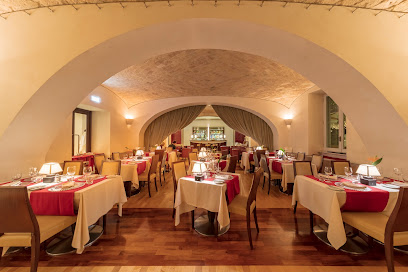
In Roma - since 1917
0.3 km
Discover authentic Italian flavors at In Roma - where tradition meets culinary excellence in the heart of Rome.
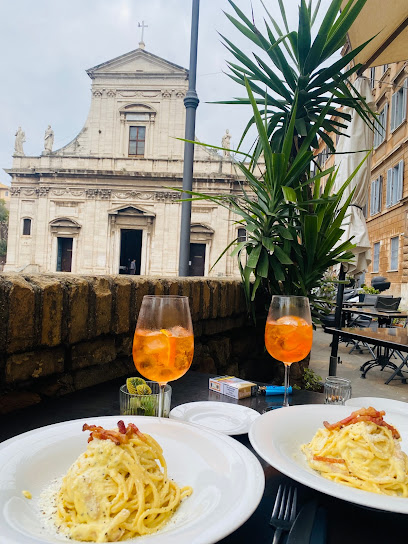
Iari The Vino
0.5 km
Experience authentic Italian cuisine at Iari The Vino in Rome - home to exquisite ravioli and warm hospitality.
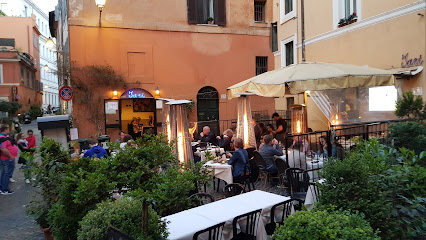
Ristorante Roof Garden
0.6 km
Experience exquisite Italian cuisine with breathtaking views at Ristorante Roof Garden in the heart of Rome.
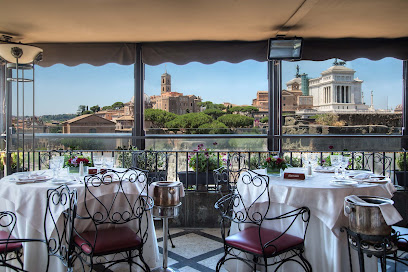
La Taverna dei Fori Imperiali
0.6 km
Experience authentic Italian cuisine at La Taverna dei Fori Imperiali in Rome – where tradition meets flavor in every dish.

Hostaria Al Gladiatore
0.7 km
Experience authentic Italian dining at Hostaria Al Gladiatore near Rome's iconic Colosseum - where tradition meets flavor.
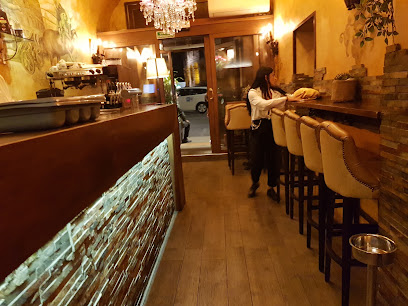
Osteria Angelino dal 1899
0.7 km
Experience authentic Roman cuisine at Osteria Angelino dal 1899 - where tradition meets flavor in every dish.
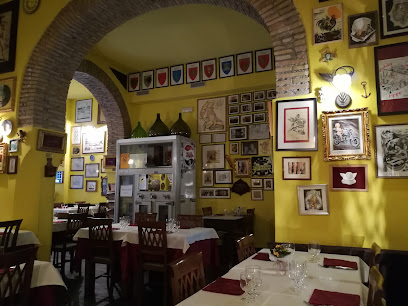
Ristorante Apuleius
0.7 km
Experience exquisite Italian cuisine at Ristorante Apuleius - where tradition meets modern elegance in the heart of Rome.
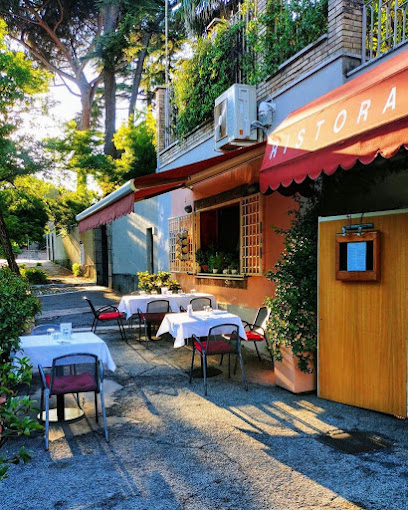
Da Nina a Trastevere
0.7 km
Discover authentic Sicilian cuisine at Da Nina a Trastevere—where every dish tells a story in the heart of Rome.
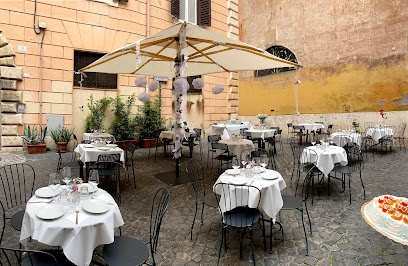
Ristorante Caffè Martini & Rossi
0.7 km
Experience exquisite Italian cuisine at Ristorante Caffè Martini & Rossi with stunning views of the Colosseum in Rome.
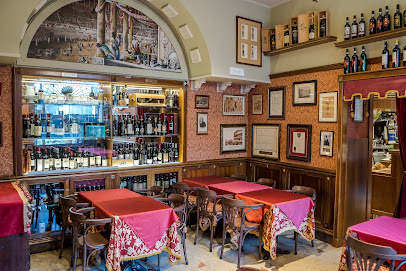
Ristoro Della Salute
0.7 km
Experience authentic Italian cuisine at Ristoro Della Salute, just steps from Rome's Colosseum - where tradition meets inclusivity.
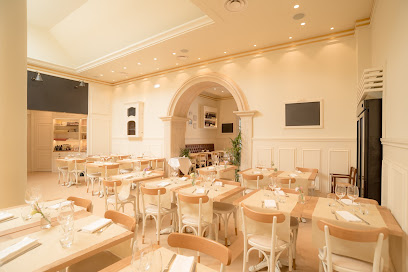
RoYaL Art Cafè
0.7 km
Discover RoYaL Art Cafè - where exquisite Italian cuisine meets artistic ambiance near Rome's historic Colosseum.
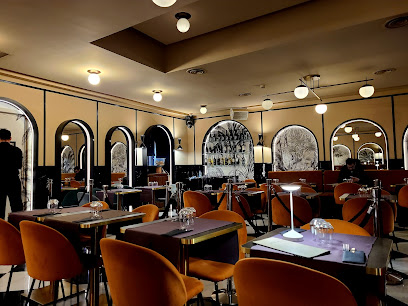
Hostaria da Nerone
0.7 km
Experience the essence of Rome at Hostaria da Nerone with authentic dishes that celebrate Italy's rich culinary heritage.
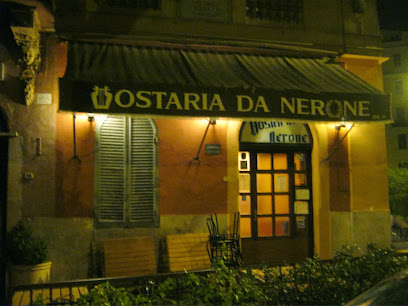
Roma Sparita
0.8 km
Experience authentic Roman cuisine at Roma Sparita in Trastevere—home to iconic dishes like Cacio e Pepe amidst charming surroundings.
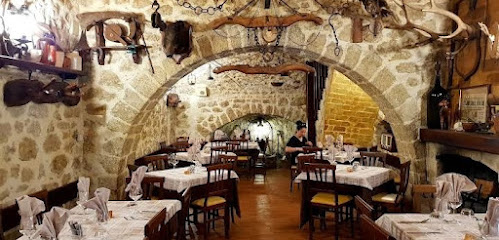
Markets, malls and hidden boutiques
King Size Vintage
0.8 km
Shop unique vintage clothing at King Size Vintage in Rome, where every piece has a story and timeless style awaits.
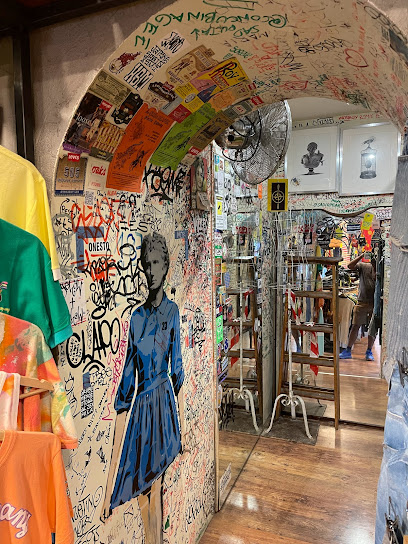
Boutique dei Serpenti - Borse e Bijoux Roma
0.8 km
Explore Boutique dei Serpenti in Rome for exquisite Italian handbags and jewelry, showcasing unique craftsmanship and timeless style.
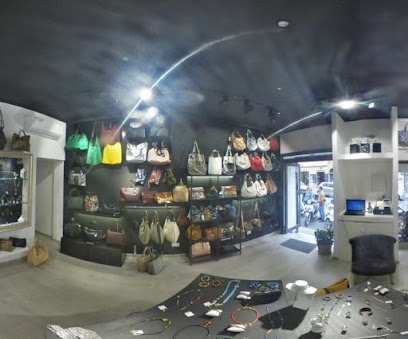
Souvenir Roma
0.8 km
Discover exquisite gifts and authentic Italian souvenirs at Souvenir Roma, the ultimate stop for tourists in Rome.
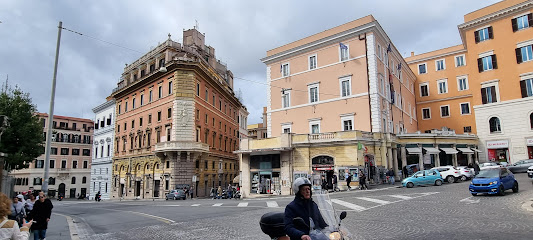
Open Door Bookshop
0.9 km
Discover the charm of Rome through literature at Open Door Bookshop, a cozy haven for book lovers in the heart of Trastevere.
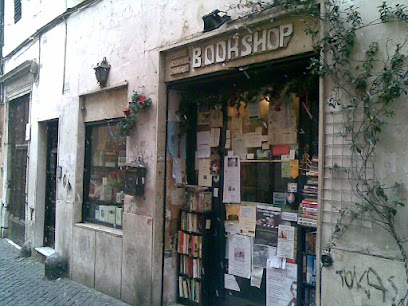
Pifebo Vintage Shop
0.9 km
Explore Pifebo Vintage Shop in Rome for unique vintage clothing and accessories, where every piece tells a story of timeless fashion.
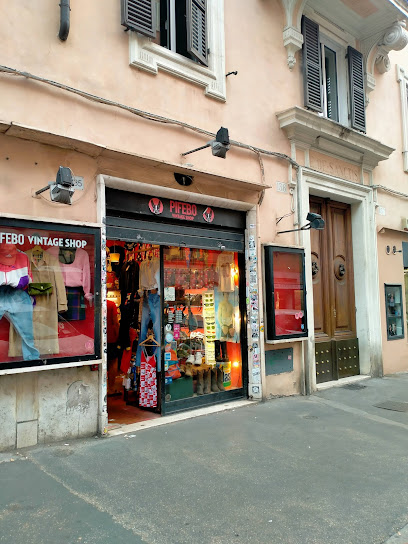
The Oliver wardrobe
0.9 km
Discover unique vintage and baby clothing at The Oliver Wardrobe, a charming used clothing store in the heart of Rome.
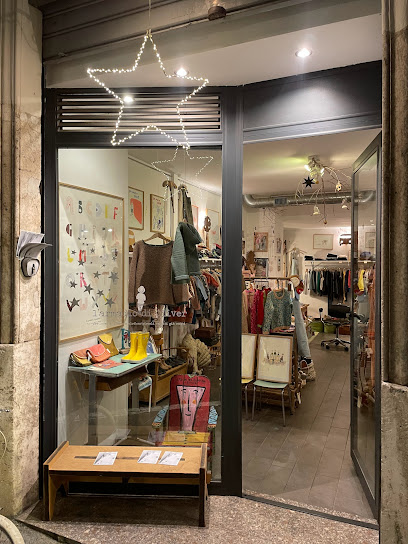
PODERE VECCIANO
0.9 km
Discover authentic Italian flavors and exquisite wines at Podere Vecciano, the charming supermarket and grocery store in the heart of Rome.
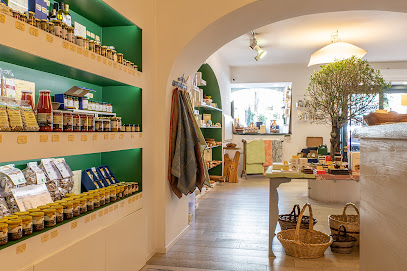
M Delavari Pelletteria Roma
0.9 km
Explore exquisite Italian leather craftsmanship at M Delavari Pelletteria in Rome, offering handcrafted bags, wallets, and accessories for discerning travelers.
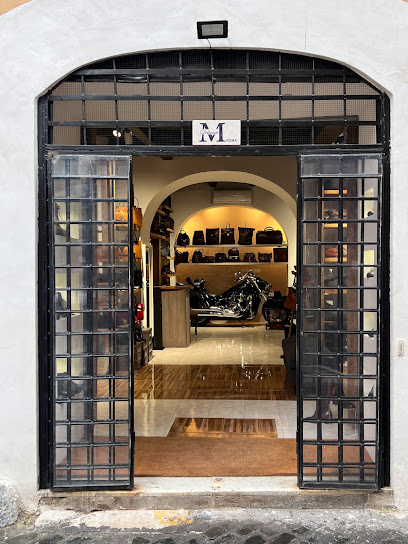
SUFIR
0.9 km
Discover SUFIR in Rome: your ultimate destination for exquisite leather goods, handcrafted handbags, and stylish dresses.
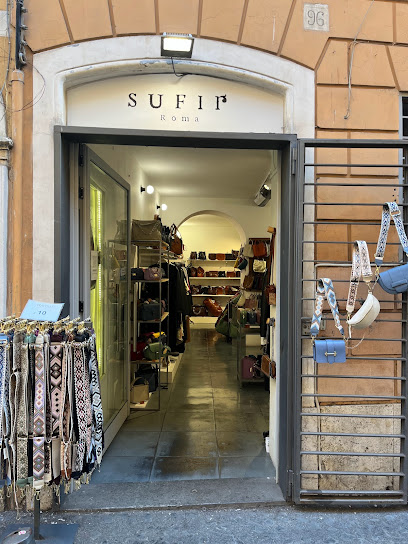
Hang Roma - Unconventional Leather Bags Handmade in Rome - Borse e Accessori In cuoio
0.9 km
Discover the charm of Italy through exquisite handmade leather goods at Hang Roma, a premier destination for fashion enthusiasts and souvenir hunters alike.
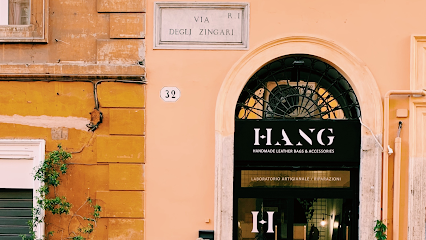
Kokoro
1.0 km
Explore Kokoro, a chic women's clothing boutique in Rome, showcasing unique styles and quality fashion for every occasion.

Blue Goose
1.0 km
Explore a vintage clothing haven in Rome's heart, where every piece tells a story and fashion meets history.
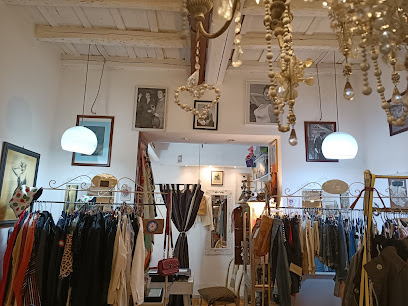
Amor Roma gift shop
1.0 km
Explore Amor Roma Gift Shop: Your go-to destination for unique souvenirs and gifts that embody the spirit of Rome.

Pulp vintage
1.0 km
Discover timeless fashion treasures at Pulp Vintage, a unique clothing store in the heart of Rome, where each piece tells a story.
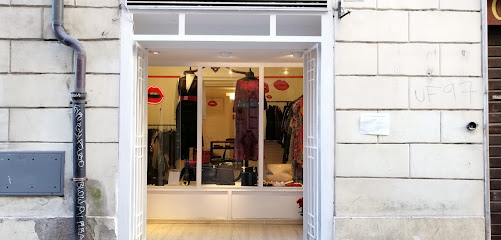
Carlo Cecchini Designer
1.0 km
Explore the exquisite handbags and shoes at Carlo Cecchini Designer, a fashion boutique that captures the essence of Italian craftsmanship in Rome.
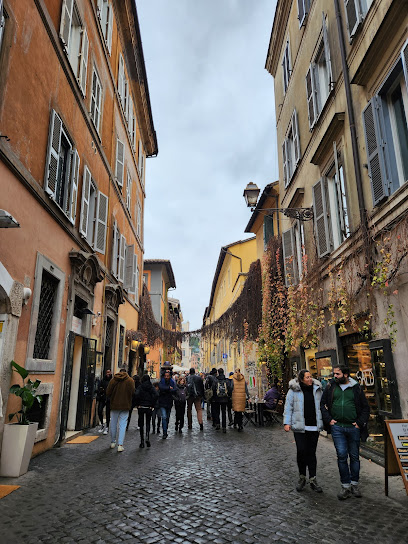
Essential bars & hidden hideouts
Caffè Roma
0.5 km
Experience the charm of Caffè Roma - a cozy coffee shop near the Colosseum, perfect for a delightful break in Rome.
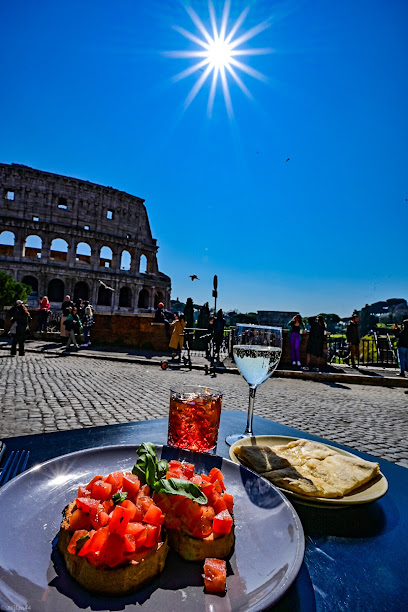
Shamrock
0.5 km
Experience the charm of an Irish pub in Rome, where delicious food, refreshing drinks, and a lively atmosphere await you near the Colosseum.
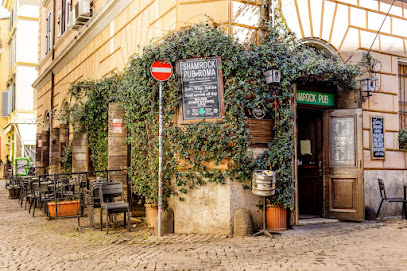
The Hole Trastevere
0.6 km
Discover the vibrant nightlife of Trastevere at The Hole, a cocktail bar blending creative drinks and local culture in the heart of Rome.
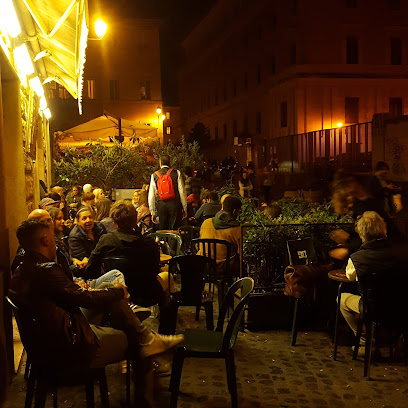
Ice Club Roma
0.6 km
Experience the coolest nightlife at Ice Club Roma, where unique cocktails and vibrant parties await you in the heart of the Eternal City.
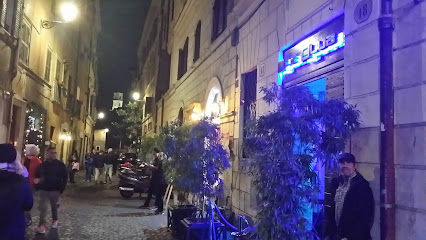
Oppio Caffè
0.6 km
Experience the authentic taste of Italy at Oppio Caffè, a delightful café in Rome offering exquisite dishes, refreshing cocktails, and a vibrant atmosphere.
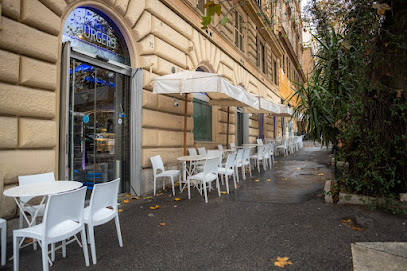
Ex Galleria
0.7 km
Discover the perfect fusion of cocktail culture and contemporary art at Ex Galleria, Rome's hidden gem for an unforgettable night out.
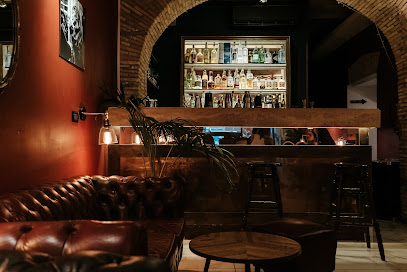
404 Name Not Found
0.7 km
Experience the vibrant cocktail culture at 404 Name Not Found Cocktail Bar, a stylish gem in the heart of Rome, perfect for unwinding and socializing.
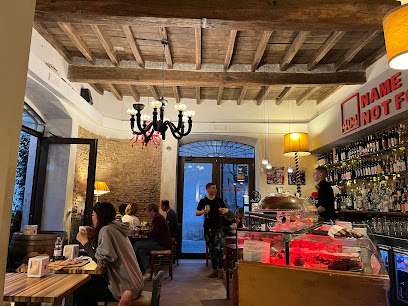
Coming Out
0.7 km
Discover the vibrant atmosphere of Coming Out, a renowned gay bar and restaurant in Rome, where inclusivity and nightlife come together.
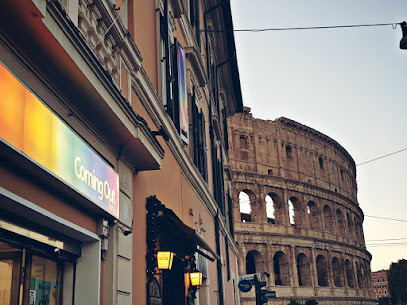
Colosseum Bar
0.8 km
Discover Colosseum Bar, where Rome's vibrant cocktail and coffee culture come alive in a stylish setting, perfect for tourists seeking local flavors.
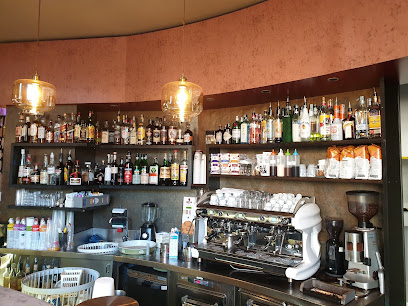
Otivm Roof Bar
0.8 km
Discover the enchanting Otivm Roof Bar, where exquisite cocktails meet breathtaking views in the heart of Rome's vibrant nightlife.
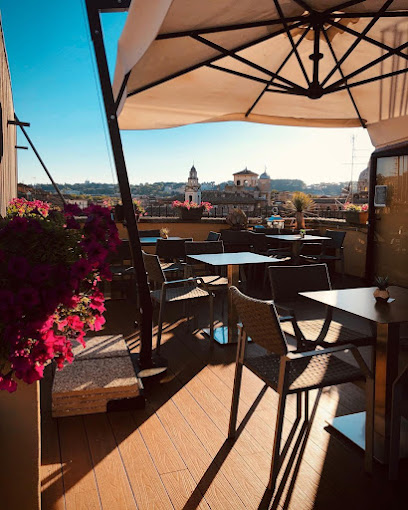
The Court Bar. Palazzo Manfredi
0.8 km
Experience the epitome of Roman elegance at The Court Bar, where handcrafted cocktails meet stunning views of the Colosseum.
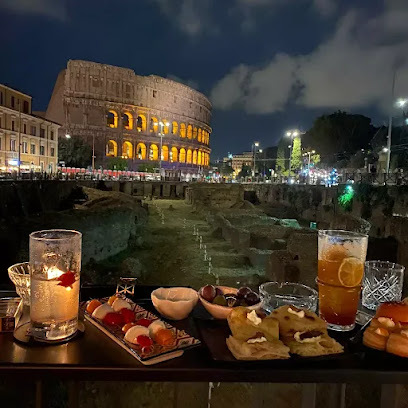
Enoteca Colosseo
0.9 km
Experience the finest Italian wines at Enoteca Colosseo, a charming wine bar in the heart of Rome, blending culture, flavor, and ambiance.

Ri.ONE RoofTop Cocktail bar
1.0 km
Discover the best views and unique cocktails at Ri.ONE RoofTop Cocktail Bar, your perfect escape in the heart of Rome, Italy.
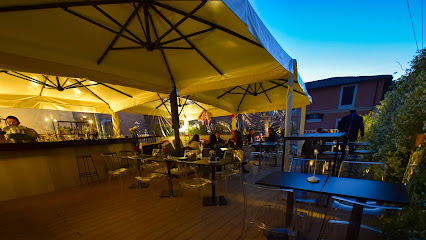
Blackmarket Hall
1.1 km
Discover Blackmarket Hall: A vibrant cocktail bar and bistro in Rome offering delicious food, exquisite cocktails, and live music in a lively atmosphere.
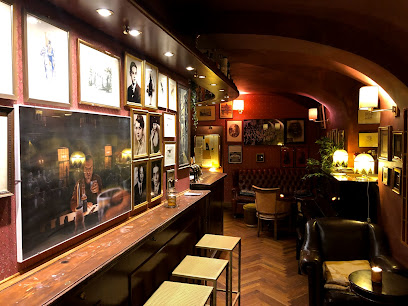
Santa Cocktail Club - Roma
1.2 km
Discover Santa Cocktail Club in Rome, where innovative cocktails and vibrant nightlife create unforgettable memories in the heart of the Eternal City.
